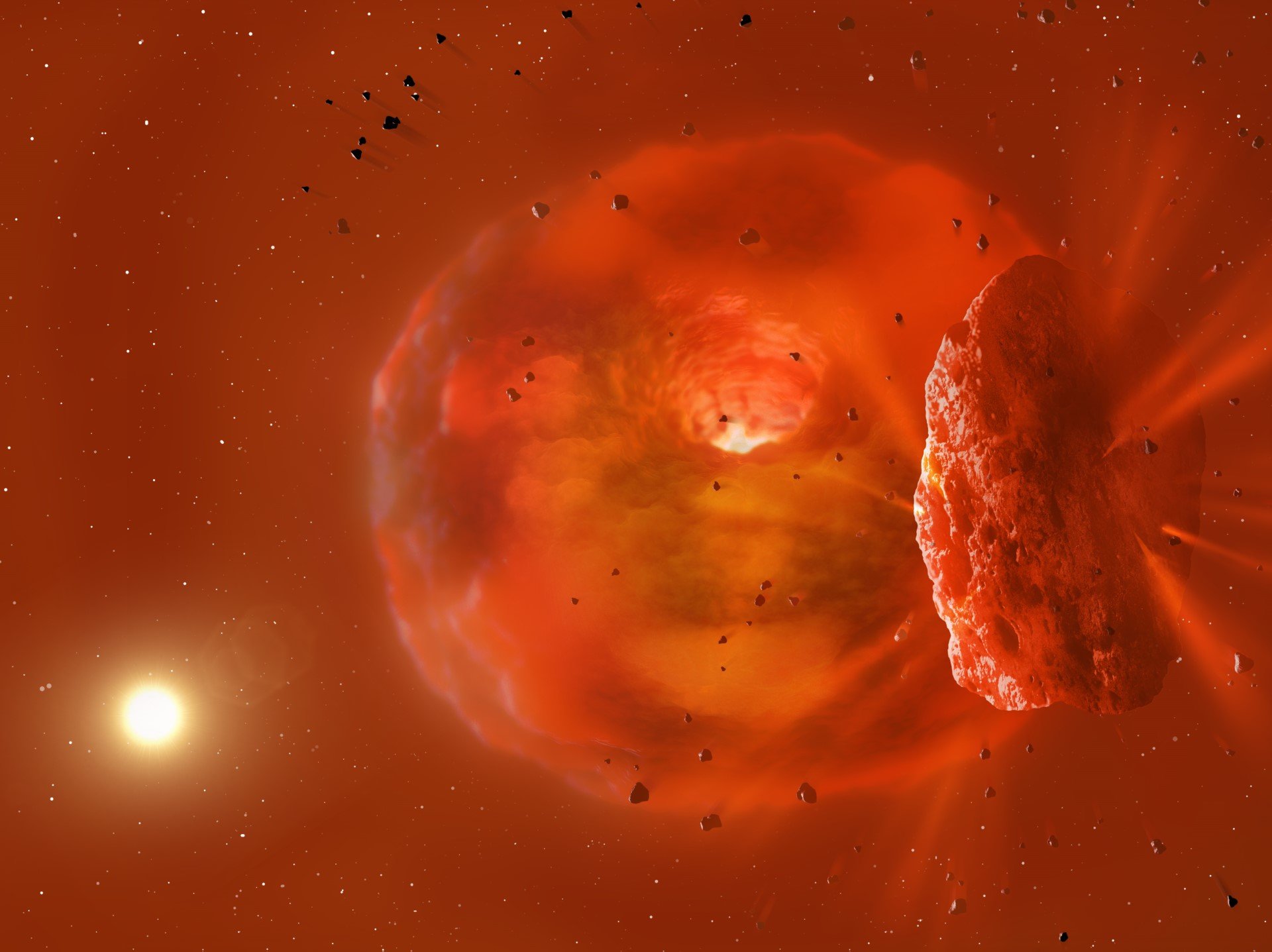In a recent cosmic event that sounds more like science fiction than reality, astronomers reported the sighting of two ice giant exoplanets (planets outside our solar system) crashing into each other around a star similar to our sun. The result? A spectacular flare of light and billowing plumes of dust, like a celestial fireworks show.
This image depicts a radiant planetary form, birthed from a massive cosmic collision. In the forefront, shards of ice and stone are propelled from the impact site, destined to later traverse between Earth and the main star, which is set against the backdrop of the scene. - Image Credit: Mark Garlick
A Surprise Discovery
This stunning revelation was first hinted at when a passionate astronomy enthusiast noticed something peculiar in the light curve of a distant star. A light curve is a graph that represents the brightness of a star over time. In this case, the star's brightness had suddenly doubled in infrared light three years before the same star started to dim in visible light.
Dr. Matthew Kenworthy, co-lead author of the study from Leiden University, recalls the surprise, "An astronomer on social media pointed out the infrared brightness of the star. It was then that we realized we were witnessing something truly unique."
The star, now named ASASSN-21qj, became the subject of intense scrutiny by a global network of both professional and amateur astronomers, all eager to unlock the mystery behind its strange behavior.
The Cosmic Puzzle Pieces Fall Into Place
After thorough observation and analysis, the scientists found the most probable explanation. Two ice giant exoplanets had collided, producing the earlier detected infrared glow. This finding was supported by NASA’s NEOWISE mission, which uses space telescopes to scout for celestial bodies like asteroids and comets.
Dr. Simon Lock, another co-lead author from the University of Bristol, explains the evidence, "Our data and computer models suggest that the temperature, size, and duration of the glow align perfectly with what you'd expect from two ice giants crashing into each other."
But what about the star dimming in visible light three years later? That was due to the expansive dust cloud formed by the collision, which then drifted in front of the star, casting a cosmic shadow of sorts.
A Glimpse into the Future
Astronomers anticipate that the dust cloud will spread out along the orbit of whatever remains from the collision in the coming years. This scattering of light from the cloud should be visible using both telescopes on Earth and those in space, like NASA's powerful James Webb Space Telescope (JWST).
Curious about the future of this system? So are the scientists. Dr. Zoe Leinhardt, a co-author from the University of Bristol, hypothesizes, "As time progresses, the material around the remnant might compact, potentially forming a group of moons that will circle this newborn planet."
For now, the cosmic dance of fire and dust continues, reminding us of the dynamic and ever-evolving nature of our universe.
Sources and fruther reading:
‘A planetary collision afterglow and transit of the resultant debris cloud’ (nature)
Too busy to follow science news during the week? - Consider subscribing to our (free) newsletter - (Universal-Sci Weekly) - and get the 5 most interesting science articles of the week in your inbox
FEATURED ARTICLES:







